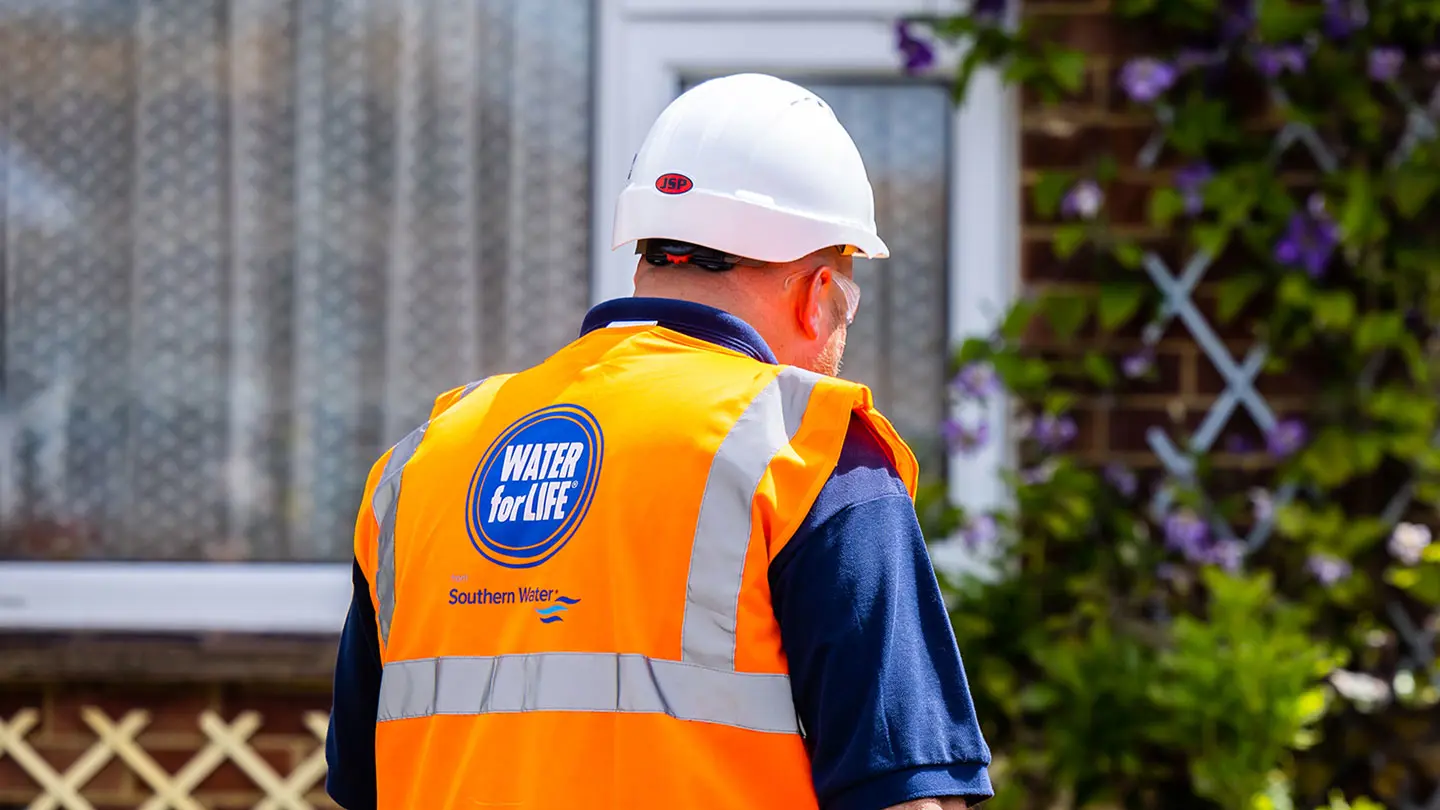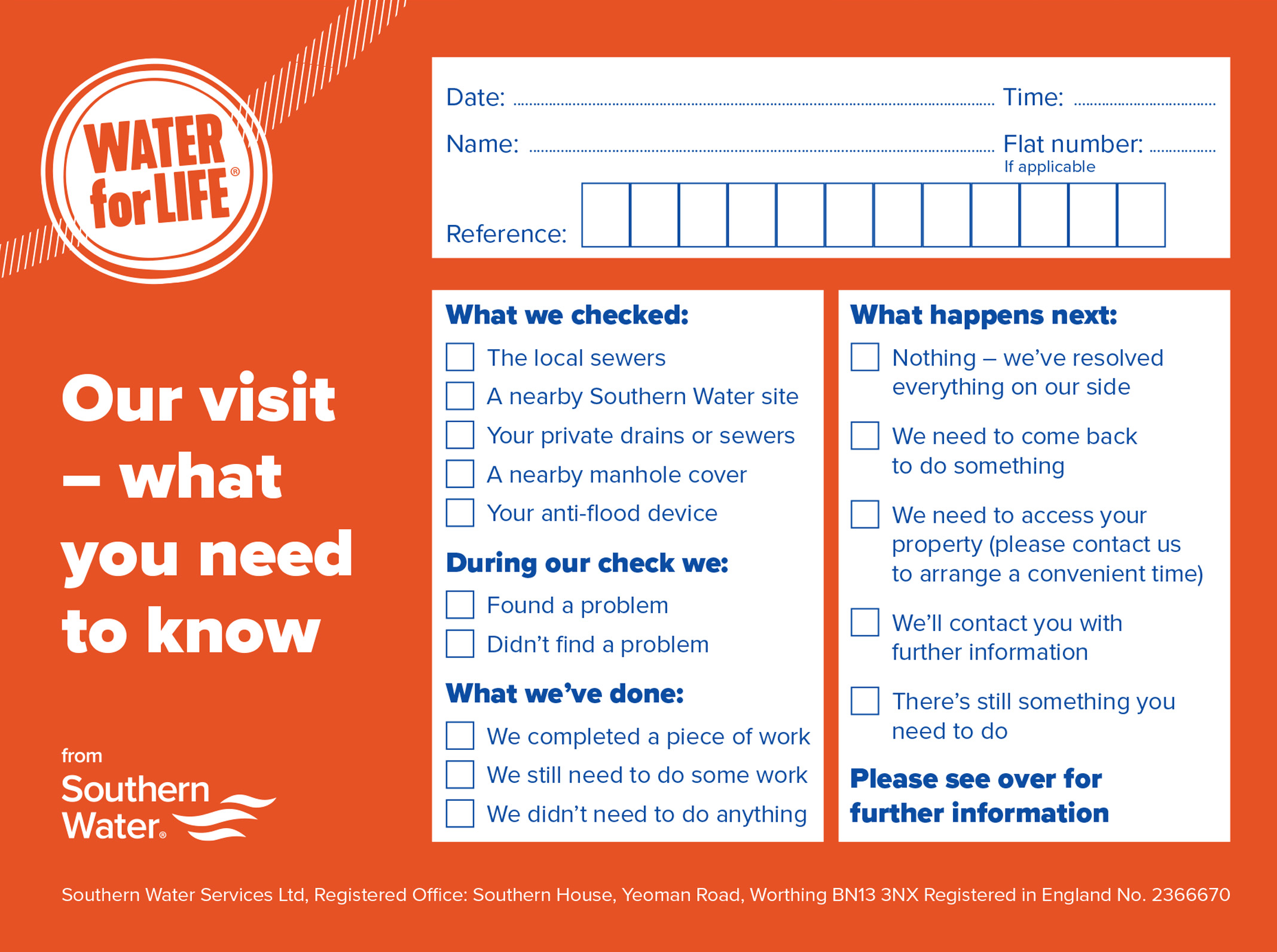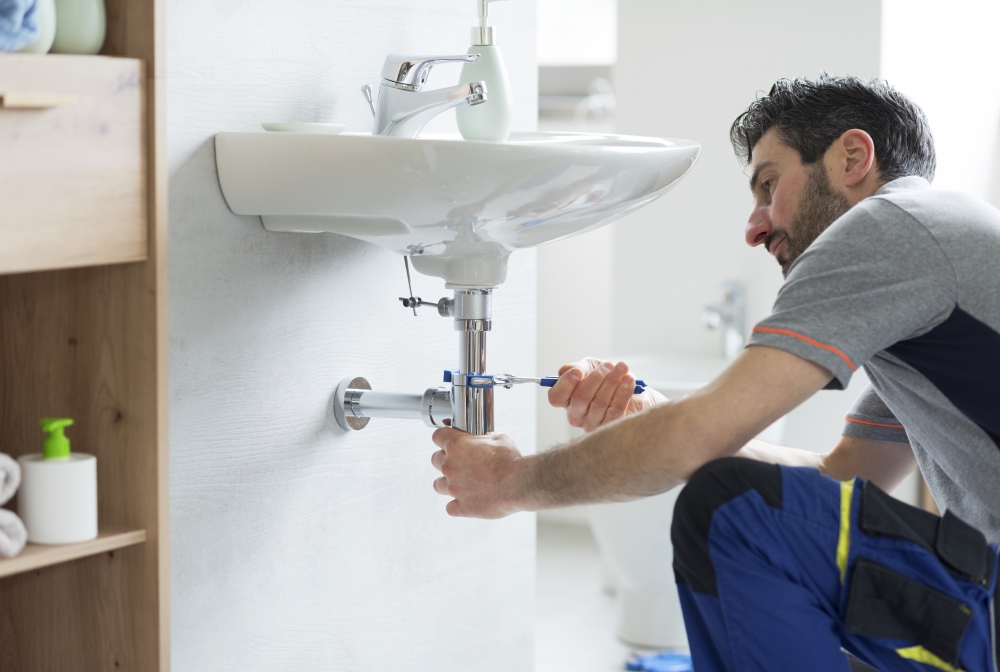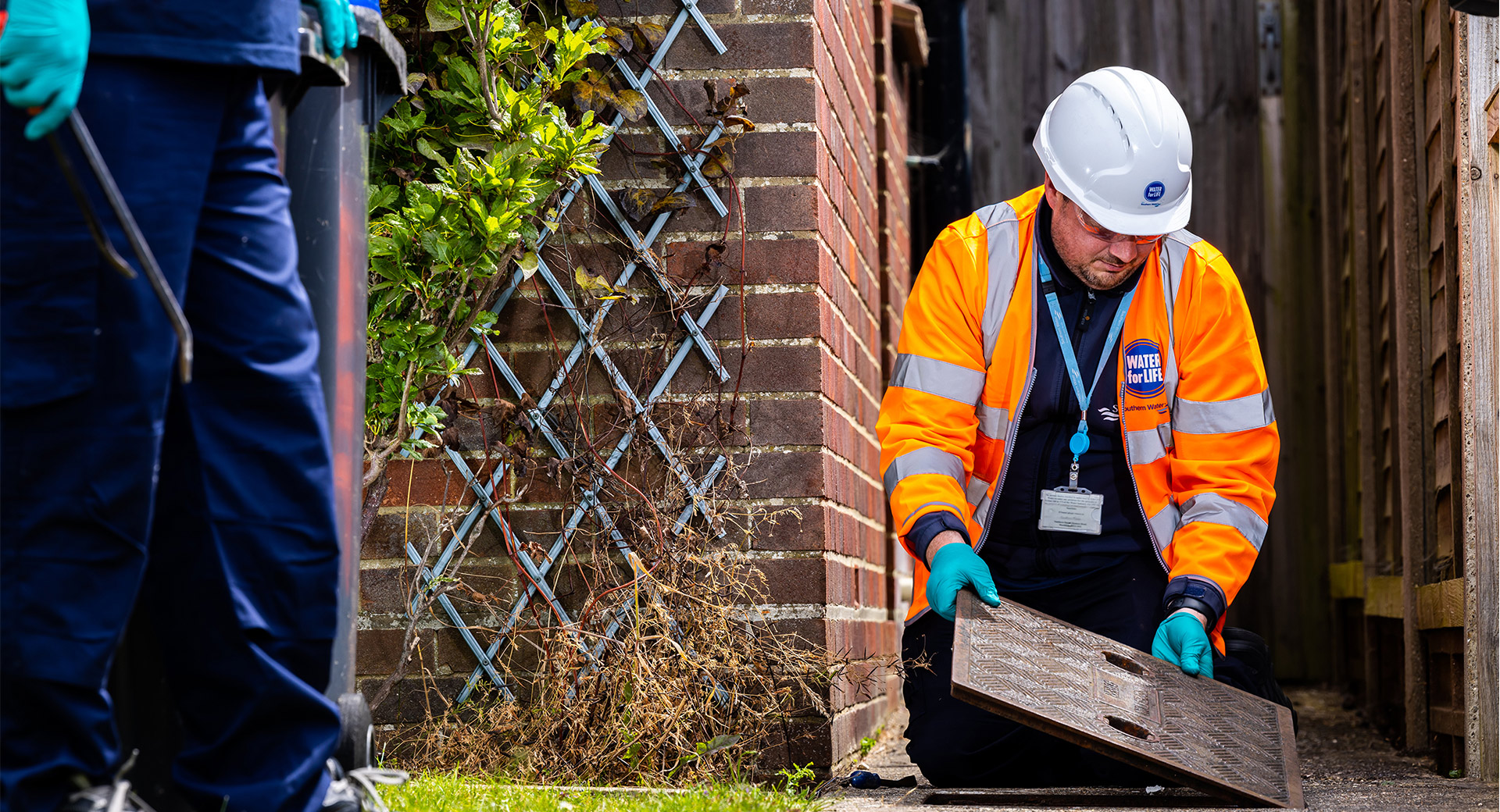Your wastewater calling card explained
We tick the relevant boxes on your red calling card to show what we checked, what we found, what we did and what happens next. Unsure what it all means? Find out below.
We regularly keep an eye on our sewer network using the latest technology and investigating in person. Our goal is to stop blockages before they cause flooding in homes or businesses.
Your questions answered
Why did the sewer block?
Blockages usually happen when fat is poured down the sink or when things like wet wipes or period products are flushed.
How can I help prevent this?
To prevent blockages, only flush the three Ps — pee, poo and paper. Wipe grease from pans before washing up and encourage your neighbours to do the same — you probably share a sewer.
What if you can’t clear the blockage?
Our team will try using a portable water jet. If that doesn’t work, we’ll bring in more powerful equipment.
When we visited, there was no blockage, but it had been raining — what else could cause flooding?
Surface water from heavy rain can overwhelm the sewer system. Groundwater might also rise to the surface and cause flooding.
The manhole in my garden keeps overflowing — what should I do?
Give us a call. It could be a blockage or rainwater overwhelming the system.
There’s debris in my garden from a previous overflow — who clears it?
Contact us and we’ll arrange a clean-up. You can also check who’s responsible for clearing up after flooding.
I’ve been told the blockage is in my private sewer — what now?
Private drainage is your responsibility. You’ll need to contact a local approved plumber to help.
Why might you need to visit again?
To check the blockage is gone or to plan further work.
If we’ve checked one of our sites and found an issue, we may need to return if:
- the issue is complex — we’ll let you know and give a timeline
- we need permission to dig up a road — this can delay things
- we need to check more sewers — this can take time, especially if we need access to private land.
We’ll keep you updated as we go.
Your questions answered
How soon can you get to a nearby site if there’s a problem?
Once you report it, we’ll log the issue, arrange a visit and update you within an hour.
What if it’s not the site causing the problem?
We’ll knock on your door to explain and call our sewer team to investigate. We’ll keep you updated.
Why did the site stop working?
It could be blocked by wet wipes or other items, or there may have been a power cut or electrical fault. To prevent blockages, only flush the three Ps — pee, poo and paper.
The alarm on our adopted pumping station keeps going off — what should we do?
Please give us a call. Until we install remote monitoring, we won’t know there’s a problem unless you tell us.
Can I reset the pump myself like I used to?
No. Many stations don’t meet safety standards. For your safety, only trained staff can access or operate the equipment.
Why are you changing the pumping station?
We’re upgrading all adopted stations and fitting remote monitoring so we can respond quickly.
Will you keep me updated?
Yes. If you’ve reported an issue, we’ll stay in touch. If we’re doing routine maintenance, we’ll let you know if we need access — otherwise, we’ll carry out the work without disturbing you.
Private drainage is your responsibility. If there’s an issue with your private drainage and we’ve come out to fix it, we won’t charge you for our first visit. If we return because another blockage is found, then we may charge you. We’ll explain your options before we visit.
If we check your private drains and sewers, we'll spend up to 30 minutes finding and fixing the issue. If it needs more work, you’ll need to contact an approved plumber or drainage company. We can’t recommend someone to fix it, but we advise you compare quotes before hiring anyone to do the work.
Your home insurance might cover the cost — check with your insurer and let your drainage company know as they may be able to claim on your behalf.
Your questions answered
Problem with a shared or public sewer?
If a contractor finds a problem on a shared sewer, please let us know.
We’re responsible for fixing it — and contractors must not carry out work on public sewers.
Who’s responsible?
- Your private drain is your responsibility. Contact your insurer as you may be covered under your policy. If you rent, speak to your landlord. If they don’t respond, contact Environmental Health.
- Your neighbour’s drain is their responsibility. Let them know. If they don’t act, contact Environmental Health.
- Plumbing in your home in your responsibility: Speak to your insurer or hire an approved plumber.
Some manhole covers have the name of the company that’s responsible for them.
If you’ve told us about an issue with a manhole cover:
- We’ll visit within 7 days for non-urgent issues.
- For urgent problems (trip hazard or broken cover), we’ll be there within 4 hours.
- If it’s our manhole and urgent, we aim to be on site within 1 hour.
- If we can’t fix it straight away, we’ll make the area safe.
- If it’s on a road, we may need permission to manage traffic — this can take up to 3 months.
If the manhole is not ours, we’ll leave a card asking you to contact your local authority.
If your property has been affected by sewer flooding, we may install an anti-flood device. This connects your property to our sewer network and contains a flap which only allows wastewater to flow in one direction.
If your home has one:
- We’re responsible for maintaining it and usually service it every 6 months.
- If we need access, we’ll knock or leave a card with a number to call to arrange a time that suits you.
- Our team or trusted partners will carry out the service — always check ID.
Keep your anti-flood device working well by:
- using less water during periods of heavy rain
- installing a water butt or soakaway to collect rainwater from your roof, taking pressure off the sewer system
- not flushing wipes, period products or food waste to help prevent blockages.









